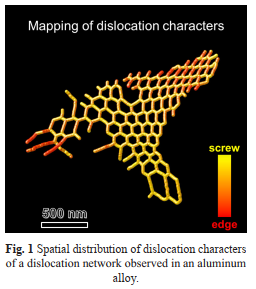High-throughput tomographic crystallography of dislocation structures in metals
Zongqiang Feng, Rui Fu, Chengwei Lin, Zhoujie Lao, Han Yang, Zijin Wang, Tianlin Huang, Guilin
Wu, Xiaoxu Huang*
Chongqing University, Chongqing, 400044
EXTENDED ABSTRACT: Dislocations are an important class of defect in metals. Their characteristics and behaviors govern many of the mechanical, physical and chemical properties of the metals. Determination of the crystallographic parameters of dislocations, such as Burgers vector, line direction, dislocation loop plane, and dislocation helix axial direction, forms the basis to determine the dislocation character (edge, screw, or mixed), to calculate the elastic strain energy of dislocations, and to understand the effects of dislocations on plastic deformation, phase transformation and properties of metals. Recently, we developed a new transmission electron microscopy technique, Tomographic crystallography of dislocations (TCD) [1], which enables high-throughput characterization of dislocation crystallography in three dimensions (3D). In this presentation, we will briefly describe the principle of TCD, followed by examples demonstrating the high throughput characterization of 3D dislocation structures observed in aluminum alloys.

REFERENCES
[1] Z. Q. Feng, et al. Curr Opin Solid State Mater Sci, 24 (2020) 100833.

Xiaoxu Huang received his Bachelor degree from Chongqing University in 1984 and his Ph.D. from Harbin Institute of Technology and then joined Risø National Laboratory of Denmark in 1995. Since 1998 he worked as a Senior Scientist at Risø that merged with Technical University of Denmark in 2007. He is now a professor at Chongqing University. He has published more than 250 papers in academic journals including Nature, Science and Acta Materialia etc. He serves as an editor of Science China: Technological Sciences and an associate editor of Nano Materials Science.